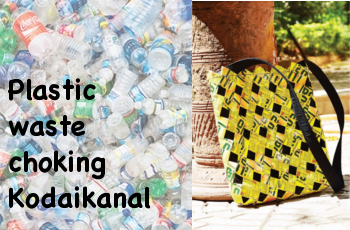04 Mar 2017, New Indian Express: ECOLOGIC- Pavitra Sriprakash, the Chief Designer and Director of Shilpa Architects writes about reducing plastic waste and recycling.
PDF | Link to The New Indian Express Site
Full Article:
The extended mandate was to achieve the Government’s Swacchh Bharat aim. So, what is the fuss about proclaiming a ban when little is done to make people comply? The “Plastic Bag Ban Map” shows many cities in India which have banned this scourge. If laws to curb waste generation are in place countrywide, what prompts some cities to take an extra step to ban plastics? And further, do they really modify behaviour?
Those who advocate continued use of plastic bags mostly cite convenience, and consider bans a governmental infringement of individual rights. Most atrociously they question if there is sufficient scientific proof to label them harmful! All told, their contention is plastic bags offer several benefits that far outweigh their disadvantages. Of course, plastic bags are lightweight, indestructible and cheap compared to other packaging alternatives. Bags of 50 microns are thicker and recyclable unlike 40 micron thick bags. But, once thin bags are discarded, it makes zero economic sense to pick them up from anywhere. Plastic bags are of polythene which does not biodegrade easily, which means they cannot be easily broken down by air, sunlight, water and soil.



